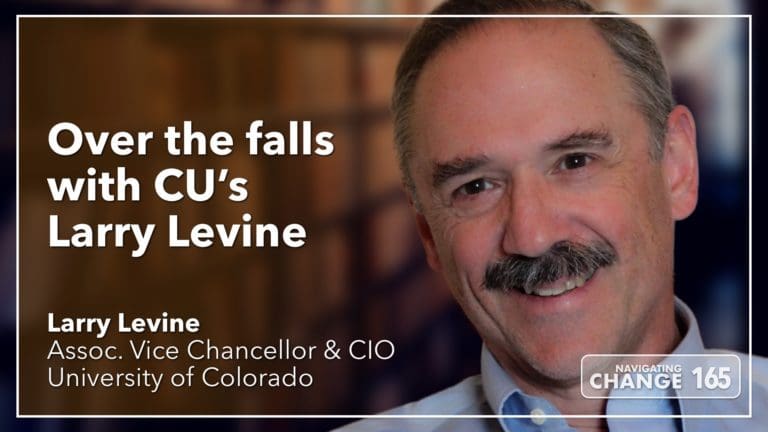
Over the Falls with CU’s Larry Levine
Larry Levine, who serves University of Colorado as associate vice chancellor and CIO, joins us today to tell a story that will help drive our conversation on building exceptional teams.
Pete has been a broadcaster for the last 30 years, falling in love with the edit bay in the back of a newsroom in Colorado Springs, Colorado. He studied journalism at the University of Colorado with a focus on long-form documentary production, turning that early experience into a career helping businesses shape the stories of their brands through image and sound. Pete earned an M.S. in Organizational Design and spent fifteen years teaching graduate marketing students the power of human-centered communications. From public relations teams on global multi-million dollar brand projects to marketing for independent business owners, Pete has helped shape communications that build brands. In 2006, he launched Fifth & Main, LLC., a media consultancy focused on brand-building through the nascent field of podcasting. In 2020, nearly 3,000 individual podcast episodes behind them, the company rebranded as TruStory FM with an ear toward the next decade of podcast education and entertainment.
Pete has hosted as well as been a panelist on a number of episodes.
This page features episodes on which he has been a host.
See episodes where Pete has been a panelist right here.
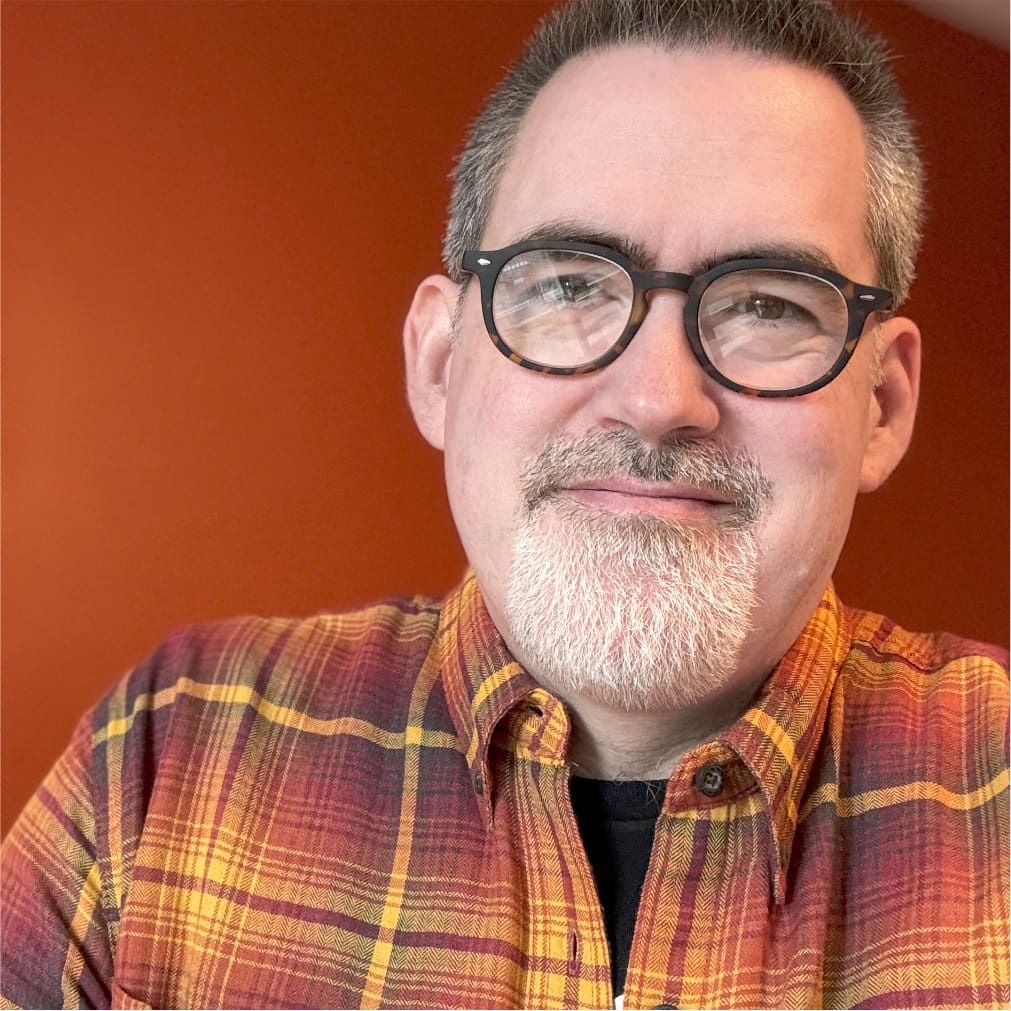

Larry Levine, who serves University of Colorado as associate vice chancellor and CIO, joins us today to tell a story that will help drive our conversation on building exceptional teams.
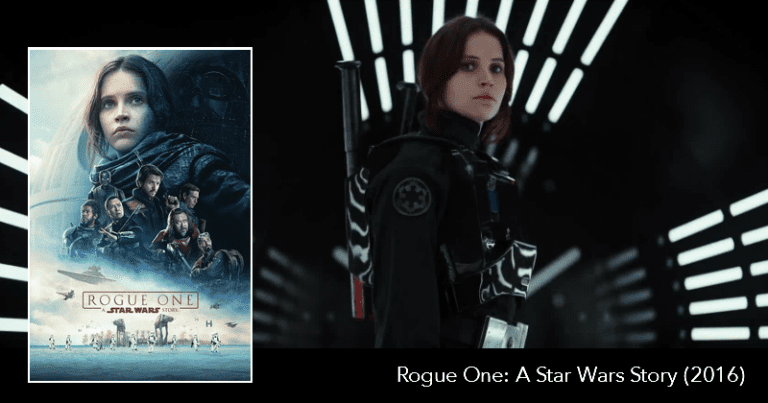
Last year doesn’t totally count as long ago nor far away, but the Disney franchise treatment this month goes all the way back into a sub-mid-prequel sort of thing with Rogue One: A Star Wars Story.
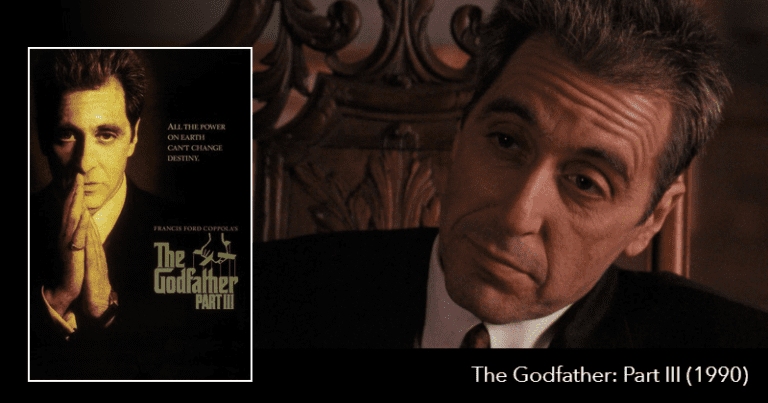
It was billed the most anticipated film of the decade, yet Francis Ford Coppola had spent that entire decade turning down requests to make it. It was only his failing finances that finally drove Coppola to accept the job of writing and directing The Godfather Part III, and for a lot of people, they probably wish he never bothered. But whatever issues they may have had getting it made, it was the casting of a key role with his own daughter Sofia that created ridiculous vitriol and hatred aimed for the writer/director. This element also ended up being a huge part of the reviews when the film finally came out. But did the film deserve this? Join us – Andy Nelson and Pete Wright – as we wrap up our Godfather trilogy series with Coppola’s epilogue to the Michael Corleone story, 1990’s The Godfather Part III.

The holidays are officially here. And if you’re struggling with ADHD, you know that the usual stress and anxiety can be magnified in any number of ways as you navigate practical and emotional hurdles.
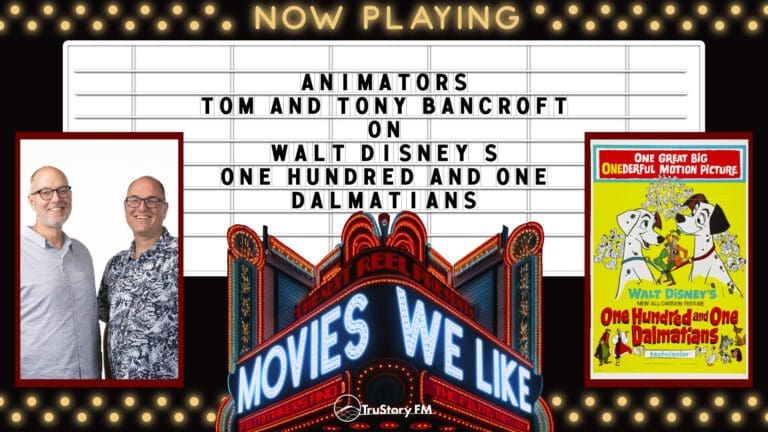
Movies We Like is our ongoing series in which we invite an industry guest to join us and bring along one of their favorite movies to talk about. In this month’s episode, we’re honored to have two guests join us to discuss one of their favorite films – it’s the Bancroft Brothers! That’s right, twin brothers Tom and Tony Bancroft, both of whom are animators, are here to chat about Disney’s 1961 classic One Hundred and One Dalmatians.

While The Godfather Part II didn’t perform nearly as well as its predecessor at the box office, Francis Ford Coppola’s sequel certainly made its money back and, more importantly, has gone on to become a film that’s often cited as one of the greatest films ever made. It even has its contingency of fans who feel it’s the stronger film of the pair. But Coppola went into it not really that excited by the prospect of making a sequel and really only jumped on board because of an idea he had that would blend the storylines of a father and of a son. Join us – Andy Nelson and Pete Wright – as we continue our Godfather trilogy series with Coppola’s 1974 film The Godfather Part II.

We’re talking about the issues that come with paper clutter today, and we have a plan to help you deal with it in a new online course: The Paper Solution. It’s an ADHD-friendly organizing system and an approach to paper designed to help you clear both the physical and mental clutter that comes from out of control paper in your life.
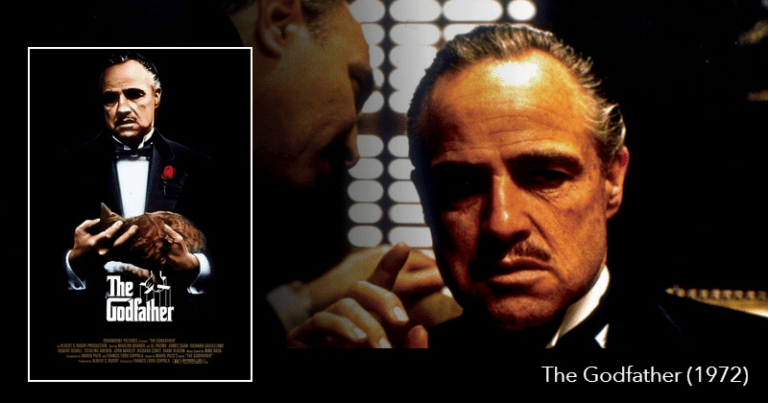
It was never a movie that was meant to be as big as it became. Robert Evans, Paramount head at the time, thought it would be a fun mobster movie designed to make a quick buck, capitalizing on the recent novel “The Godfather” by Mario Puzo. But Francis Ford Coppola saw something in Puzo’s novel; he saw a family chronicle that was a metaphor for capitalism in America. He saw a crime epic. And he set out to make that version of the book. In the end, despite the fights with the studio that he had while making it, he stuck to his guns and The Godfather still stands as arguably one of the greatest films of all time. Join us – Pete Wright and Andy Nelson – as we kick off our Godfather trilogy with the movie that started it all, Coppola’s 1972 film The Godfather.

From email to filling in forms to reports and more, even if you don’t consider yourself a writer, you likely work with more words than you would ever count. This week, we’re talking about how you can make yourself more efficient with the words you sling, and more consistent and accurate in spite of your ADHD, too.
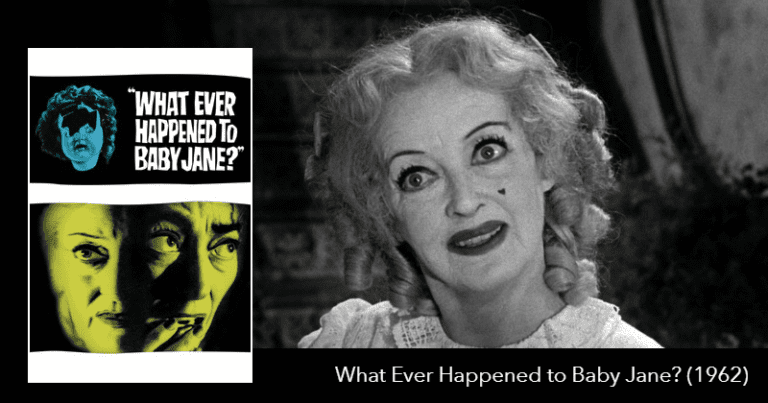
The animosity between Bette Davis and Joan Crawford almost seems the stuff of legend. Looking back from today, it’s hard to say how much there really was or if it was all conjured up by the studios and the press. But after hearing stories of the two and how things went after they collaborated on What Ever Happened to Baby Jane?, it’s clear that there really was a… competitive nature, let’s just say, between the two women. Join us – Pete Wright and Andy Nelson – as we wrap up our Bette Davis series with Robert Aldrich’s 1962 film What Ever Happened to Baby Jane?.